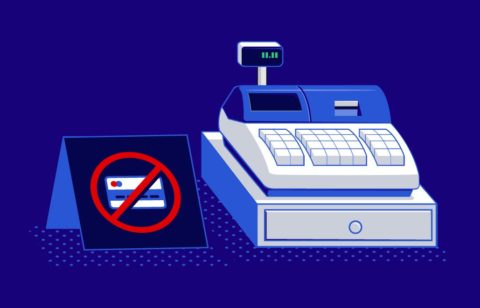Inductive reasoning is when you try to determine the truth of something by reasoning from the specific to the general. An example of this in the case of debt would be:
I have this debt, which is bad.
Therefore, all debt is bad
The problem with inductive reasoning is that it’s impossible to prove its conclusions are true. And this is certainly true in the case of debt. Despite what you may have been told many times over the years not all debt is bad. In fact, most financial experts today recognize the fact that there can be good debt as well as bad debt.
Bad debt
Bad debt is debt you use to finance things you consume. The biggest example of bad debt is probably credit card debt because of the way most people use credit cards, which is typically to buy clothing, furniture, a cell phone or to pay for a night out on the town.
Even though we may not want to admit it, using debt to pay for a vacation is also bad debt. A vacation might improve your health and emotional outlook and help you be more productive when you get back but vacations never appreciate in value. When you use debt to finance a vacation you’re basically borrowing from tomorrow in order to pay for today’s fun. Once the fun is over all you really have left are some happy memories and a lot of debt. This is especially true if you use debt to finance a vacation you can’t afford.
What is good debt?
What’s good debt? Many financial experts now regard debt you use as an “investment” as good debt. How, you might ask, can any debt be considered an investment? It can be if you use it to buy something that will increase in value over the years and contribute to your general financial health. Here are three concrete examples of debt that most experts would agree is good debt.
Buying a home
Getting a mortgage to buy a house is considered to be good debt because housing always increases in value over the long run. As an example of this where we live houses have increased an average of 12% just in the past year. If you lived here and bought a house a year ago for $200,000 home, it would now be worth at least $224,000 and would therefore be a very good investment. In addition, owning your home can contribute to your emotional health because for most people owning their homes gives them a heightened feeling of security and happiness. Of course, it’s important to never take out a mortgage that you can’t afford, as this would turn that good debt into bad debt.
Going back to school
A second example of good debt is to finance your education if you decide to go back to school to further your career. In fact, this could be a very good debt because it’s likely you would be able to see a nice return on the investment. As an example of this let’s suppose you were to spend $20,000 to get an MBA, which then enabled you to get a job earning $10,000 more a year. You would have that MBA “paid for” in just two years and by year three you would be clearing a “profit” of $10,000 a year. Of course, just as with using debt to buy a home it’s important that you don’t run up too much student loan debt. Studies have shown that when people end up owing $50,000 or more on student loans it’s because they used too much of the money to finance expensive vacations or for their everyday living expenses.
Going into business for yourself
A third situation where debt can be considered good is if you’re starting a business. According to the website Nerd Wallet two thirds of today’s millionaires are entrepreneurs – meaning that they started their own businesses. If you’re starting a business and need to purchase equipment or lease space you could need an SBA (Small Business Administration) loan to help you get started. Just as with going back to school you need to borrow as little as possible. For example, instead of leasing space you might be able to work out of your home. If you do need to borrow money you might be able to get it from family members at much more favorable terms than if you were to go to a bank. Of course, you will still need to be diligent about paying back the money or you could end up causing a horrible family situation.
The ½ — buying a car
This is definitely a gray area because most experts would say that buying a car is bad debt – as automobiles never appreciate in value. In fact, the minute you drive a new car off the lot it will lose somewhere around 20% of its value. However, if you require that automobile to get to and from work or if you use it in your business then it could be considered to be good debt. If the size of your family has increased and you need a larger sedan or an SUV in order to haul everyone around, you could consider that loan to be good debt or at least necessity debt. If you do find you need a new vehicle, it’s always better to buy used and avoid that 20% depreciation you’d get hit with when you drive a new car off the lot. You’ve probably seen dozens of television commercials offering 24- or 36-month automobile leases. When the leases run out on all those vehicles they are sold at much more affordable prices, which means you might be able to pay off that loan in 36 months instead of 60 or even 72.
When it’s okay to use a credit card
As we said before, credit card debt is bad debt. But if you keep your balance low enough that you can pay it off every month then having a credit card can be a good thing. Using a credit card is certainly safer than carrying around a big wad of cash and can be more convenient than writing a check. The credit card business has become very competitive and there now numerous cards available that come with nice rewards in the form of points, airline miles or cash back. So long as you can pay off your balance at the end of every month it’s certainly okay to use a credit card and reap some of those rewards. In fact, there are people who put everything on a credit card – groceries, gas, clothes, movies, school supplies, take-out meals – in order to earn the maximum number of miles or cash back. There’s absolutely nothing wrong with this strategy as long as you pay off your balances every month. But if you start carrying balances forward you could soon find yourself paying 15%, 19% or even more in interest, which would quickly gobble up those airline miles, points or cash back you’re earning.
Here, courtesy of National Debt Relief, is a short video with 10 good tips for using your credit card(s) sensibly.





